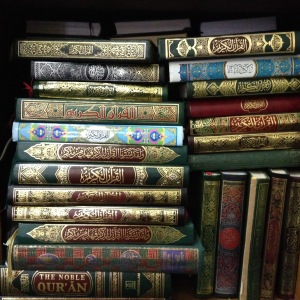The Bamboo Dancers, N.V.M. Gonzalez, 1959
- Philippines, #13
- Borrowed from SF public library
- Read December 2017
- Rating: 3.5/5
- Recommended for: Zooey Glass in Manila
Last week’s book dealt with the difficult lives of Filipino laborers in America during the Great Depression. This week we’re looking at the other extreme of the socioeconomic scale: while the characters in The Bamboo Dancers are, like Carlos Bulosan, Filipinos living in the US, in this case they are highly educated, privileged, and above all, temporary expats rather than long-term immigrants. They have come to America on arts grants and writing fellowships. Their friends are professors and intellectuals. And instead of naked racism and violence they are met with friendly, if ignorant, curiosity (one of the running jokes in the novel is that Americans, meeting the Filipino characters, invariably ask about “the bamboo dance”—the tinikling—because it’s the only element of Philippine culture they have any familiarity with).

Reading this book I felt constantly that I was missing something. Very little exegesis is given; it reads as if we are dropped into the middle of conversations full of significance and history and we have to try to figure it out (I felt this way reading Hills Like White Elephants when I was in middle school, so maybe I need to wait twenty years or so and read this again). I like it, but I’m not sure I get it. There’s this sort of affectless narrator, traveling around the world seemingly at random (New York-Vermont-New York-San Francisco-Tokyo-Kyoto-Hiroshima), existing at a remove from all those he encounters, even his lovers and family. It reads like a lot of your favorite manly midcentury writers—Hemingway, Kerouac, Salinger (if I were going to be cruel I might describe it as Salinger without the heart, Kerouac without the enthusiasm, and Hemingway with more sensitivity…but it’s better than that makes it sound). The Hemingway influence is perhaps intentional (at one point he tells his lover she looks like Lady Brett Ashley) but there is slightly too much emotion and too much exuberance for Hemingway. Slightly. Not that I would describe the work as exuberant (it’s fairly flat) but not quite as flat as Hemingway.

(Side note: I find it so interesting that the three authors mentioned above have all been, at one time or another, cherished favorites of mine, and now I dismiss them as a testosterone fest? Privilege is of course a watchword of all three—white privilege, male privilege, economic privilege—especially in the case of Salinger—but does that mean they are dismissable? Or even overrated?)
There’s a lot I don’t remember about this book, but one of the few scenes that really stands out in my mind is when the narrator, Ernie, is invited to dinner at a Filipino couple’s house in the US, and the way the smell of the food cooking reminds him of home. It is perhaps the most emotion we see from him, even in a book that involves a senseless hit-and-run killing and a tour of post-nuclear Hiroshima. It captured, for me, the feeling of constant tension that comes with living in a foreign country, the way that things are always just a little bit different from what you grew up with. Sometimes you’re not even aware of the ways it wears you down until you are presented with something you didn’t even know you were missing, like a home-cooked meal with ingredients from your childhood. I very much doubt this was the point of the book, but two years out that is my major takeaway.


One thought on “The Bamboo Dancers”